Well hung? We interview Martino Gamper about his new book of (around) 1,000 hooks
Italian maverick designer Martino Gamper doesn't hang around. He has a new book featuring 1,000 hooks made by hand. We ask him how and why...
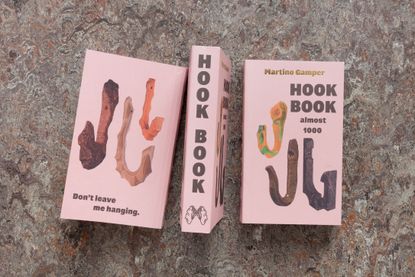
You could never accuse designer and artist Martino Gamper of being idle. Audacious? Yes. Precious? No. Few individuals have put such a volume and variety of work into the world with their bare hands. His curiosity to experiment through doing is impressive, voracious, perhaps even concerning. How restless is that mind? How raw are those fingers? While a comprehensive retrospective of Gamper’s projects is opening in London in October 2024, a new pearlescent pink book from his publishing house Dente-de-Leone has landed with a thud in time for summer.
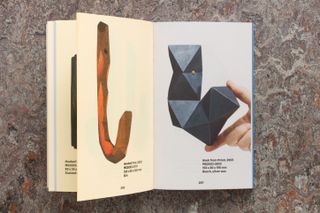
Inside the Hook Book, designed by Åbäke, published by Dente-de-Leone, £27 from dentdeleone.com and Waterstones
Hook Book – almost 1000 catalogues the indefatigable Italian’s recent focus on – well, the clue is in the title. It is a beautiful object in itself, designed by Åbäke and bearing all the hallmarks of the design studio’s playful sophistication. In a glorious panoply of papers and printing techniques, Gamper’s thousand-odd (and sometimes they are odd) hooks are laid bare. The sheer range is mind-boggling in itself. Each hook is a minor feat; together, the collection presents as a taxonomy of materials and processes – a single archetype extrapolated into smithereens.
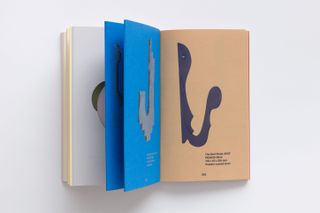
Inside the Hook Book
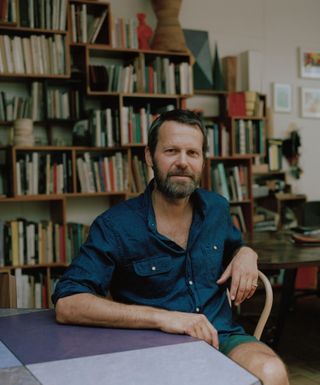
Martino Gamper
Gamper got properly hooked on hooks in New Zealand, where he tends to spend winter. An early collection of hooks was exhibited as ‘Hookaloti’ – a show in 2019 at Michael Lett in Auckland. A second show, in 2023 at Anton Kern in New York, gave Gamper the impetus to rapidly expand his hook library. That show had the beautiful title ‘I Am Many Moods’, courtesy of Gamper’s friend, the author Deborah Levy, who also penned a quietly profound text for Hook Book, titled: ‘Attachment Theory; holding and letting go’.
Gamper’s world is compelling. So when Hook Book arrived, we picked up the phone to find out more…
Why Martino Gamper is hooked on hooks
Wallpaper*: You are rigorous Martino!
Martino Gamper: The hooks were the easy part. Photographing and cataloguing everything for the book was far more laborious.
W*: The appeal of a hook is perhaps obvious, but I’m curious to hear what you like about them.
Wallpaper* Newsletter
Receive our daily digest of inspiration, escapism and design stories from around the world direct to your inbox.
MG: I have always liked hanging things on hooks. I like to keep things off the floor. In 2011 I did a live-in residency show at Galleria Franco Noero in Turin. I moved in with nothing but a daybed and made all the furniture over the course of a month from my imagination. I really missed having anywhere to keep things – to hang things. Hooks.
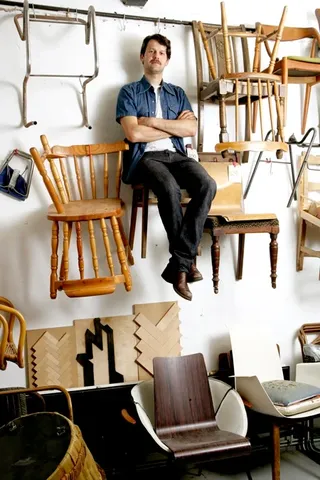
Hanging around – back in the day
Wallpaper*: I remember visiting you in 2007 in the early days of your ‘100 Chairs in 100 Days’ project, and even then most of your studio was hung on the walls on pegs and hooks and various mechanisms.
MG: That’s right. Hooks are simple objects but also ambiguous. They are sculptural, decorative and functional simultaneously. That’s quite a rare combination. They hold interesting space around them.
W*: Tell us about the material variety.
MG: It was a good excuse to play with different materials that I don’t know. I always like to push the limits of my knowledge and experience, but you have to have a good enough reason to use a new material. A hook is a fairly simple experiment in this case: make a 90-degree bend (or thereabouts) in anything and it can become a hook. Also it is a three-dimensional object, not a flat surface. All it has to do is hopefully be strong enough to hold something up.
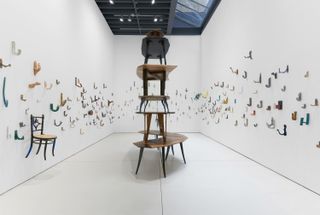
Installation view of 'I Am Many Moods' at Anton Kern, New York, 2023
W*: How do you feel when you see them in such a large volume, as at Anton Kern in New York?
MG: It was quite an overwhelming installation. I thought I had a concept but an empty white cube is a difficult challenge. I asked the team to close their eyes and take a marker and start plotting. We then drilled holes and installed, with a few tweaks. In retrospect it was almost too much – it can sometimes be hard to see the wood for the trees.
W*: You talk about relying on intuition in your practice and process. Please expand.
MG: I like to do first and think second. I need to get my hands into my projects and then work out what’s happened. You can overthink things in advance, but I find it makes more sense for me to post-rationalise than pre-determine. There’s too much complexity in life already. Keep things simple!
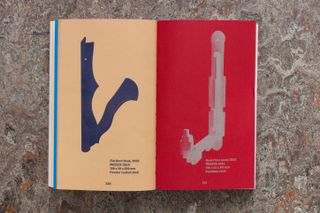
Inside Hook Book
W*: Is there a material that surprised you?
MG: Cork is strangely difficult to work with. It’s very soft. You can’t really sculpt it, only sand it. You can’t really paint it either, it doesn’t easily take on colour or dye. Clay on the other hand I loved learning about. I made hooks in several excellent potteries in New Zealand. It’s a remarkable material. If you don’t get things right first time, even if you’ve fired it, you can grind it back down and start again. It has infinite possibility.
W*: Your books are fast becoming collectible objects too. How important is the book as part of your process and perhaps also your legacy?
MG: I’ve always loved books being part of my projects. Even at the Royal College of Art I made a book with Kajsa [Ståhl, from Åbäke] about corners. Photographing and documenting is a powerful way of communicating. I really believe in books and I believe they endure as physical objects. My book for ‘100 Chairs’ is handy for schools and universities, I’ve found. It helps as a tool to talk to students about different ways of thinking and working in design, hopefully opening eyes and minds at an important stage in their learning.
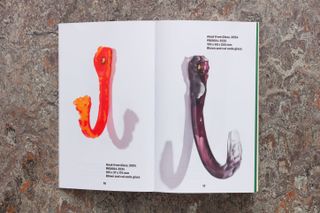
Inside Hook Book
W*: And as for all those hooks – what happens next?
MG: They are on their way back from New York. They will appear in my show in October, and then I’m looking forward to them spreading out to people’s homes around the world. We have quite a few hooks at home. And I will keep making them, too.
Hook Book – Almost 1000, designed by Åbäke, published by Dente-de-Leone, £27 from dentdeleone.com and Waterstones
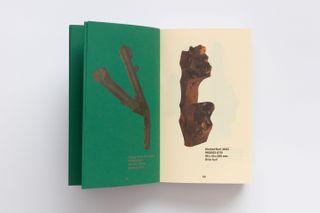
Inside Hook Book
Hugo is a design critic, curator and the co-founder of Bard, a gallery in Edinburgh dedicated to Scottish design and craft. A long-serving member of the Wallpaper* family, he has also been the design editor at Monocle and the brand director at Studioilse, Ilse Crawford's multi-faceted design studio. Today, Hugo wields his pen and opinions for a broad swathe of publications and panels. He has twice curated both the Object section of MIART (the Milan Contemporary Art Fair) and the Harewood House Biennial. He consults as a strategist and writer for clients ranging from Airbnb to Vitra, Ikea to Instagram, Erdem to The Goldsmith's Company. Hugo has this year returned to the Wallpaper* fold to cover the parental leave of Rosa Bertoli as Global Design Director.
-
 Bali welcomes Tri Hita Karana Tower, a hybrid sound and vision centrepiece
Bali welcomes Tri Hita Karana Tower, a hybrid sound and vision centrepieceTri Hita Karana Tower is launching at Bali's Nuanu City; designed by Arthur Mamou-Mani, it’s a new hybrid art-AI architectural landmark for the island
By Ellie Stathaki Published
-
 Lego opens its first Superpower Studios at Paris’ La Gaîté Lyrique
Lego opens its first Superpower Studios at Paris’ La Gaîté LyriqueIn collaboration with Lego’s new Global Play Ambassadors, artists Aurélia Durand, Chen Fenwan and Ekow Nimako, and overseen by Colette co-founder Sarah Andelman, Paris is the site of the first Lego Superpower Studios
By Jonathan Bell Published
-
 ‘If kids grew up going to London Design Festival they would learn so much’: architect Shawn Adams
‘If kids grew up going to London Design Festival they would learn so much’: architect Shawn AdamsIn the first of our interviews with key figures lighting up the London Design Festival 2024, Shawn Adams, founder of POoR Collective, discusses the power of such events to encourage social change
By Ali Morris Published
-
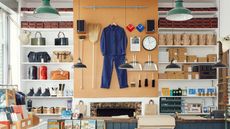 Discover London’s lesser-known design gems with ‘an opinionated guide’
Discover London’s lesser-known design gems with ‘an opinionated guide’‘An opinionated guide to Design London’ by Sujata Burman and Wallpaper’s Rosa Bertoli is a carefully curated tour of intriguing design spots across the capital
By Tianna Williams Published
-
 New Louis Poulsen book explores the Danish lighting company's illuminating world
New Louis Poulsen book explores the Danish lighting company's illuminating worldLouis Poulsen: First House of Light, published by Phaidon, is a new design book delving into the Danish company's world of radiant lighting
By Jens H Jensen Published
-
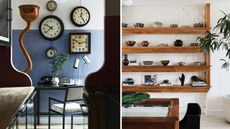 ‘What We Keep’: 50 creatives on the objects they collect and use in their homes
‘What We Keep’: 50 creatives on the objects they collect and use in their homes‘What We Keep’ is a new book by Jean Lin, founder of the New York City design gallery Colony, an ode to objects and the people who obsessively collect them
By Diana Budds Published
-
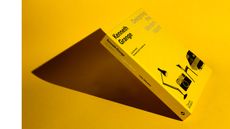 Sir Kenneth Grange’s influential industrial designs are chronicled in a new book
Sir Kenneth Grange’s influential industrial designs are chronicled in a new book‘Kenneth Grange: Designing the Modern World’ explores the life and work of the pioneering British industrial designer
By Jonathan Bell Published
-
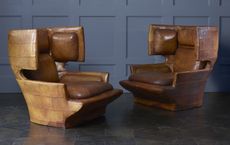 LA gallery Blackman Cruz celebrates 30 years of ‘beauty, oddity, and specialness’
LA gallery Blackman Cruz celebrates 30 years of ‘beauty, oddity, and specialness’‘Beauty & Mischief: The Design Alchemy of Blackman Cruz’ is a new book that charts three decades of the LA antique and modern furniture gallery, with a foreword by Ryan Murphy
By Rosa Bertoli Published
-
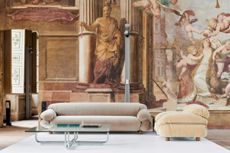 From the spoon to the city: the design of Gianfranco Frattini
From the spoon to the city: the design of Gianfranco Frattini‘Gianfranco Frattini. Design 1955/2003’ is a new book chronicling the architect and designer’s work as well as his concept of designing ‘from the spoon to the city’
By Cristina Kiran Piotti Published
-
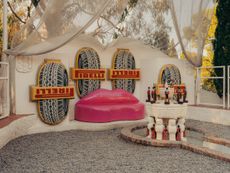 Inside Salvador Dalí’s eccentric Portlligat home
Inside Salvador Dalí’s eccentric Portlligat homeSalvador Dalí's eccentric Portlligat home is the subject of ‘Casa Dalí’, a new book by Apartamento with photography by Coco Capitán
By Rosa Bertoli Published
-
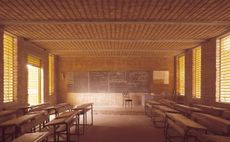 A new book charts the history of Black design
A new book charts the history of Black design'Now You See Me! An Introduction to 100 Years of Black Design' is a new book by Charlene Prempeh covering fashion, architecture and design
By Shawn Adams Published